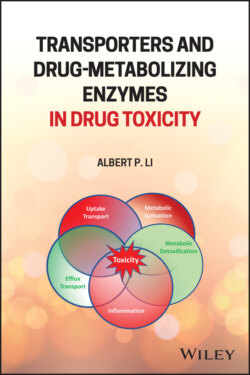Читать книгу Transporters and Drug-Metabolizing Enzymes in Drug Toxicity - Albert P. Li - Страница 36
2.5.2 CYP3A5
ОглавлениеCYP3A5 expression is highly polymorphic. The most common loss‐of‐function variant is CYP3A5*3, which harbors a 6986A>G mutation in the third intron [67]. This causes aberrant alternative splicing and a premature stop in protein translation. The resulting truncated protein is defective in enzymatic function. CYP3A5 genotype‐based dosing has been suggested for the immunosuppressant tacrolimus, used in patients who received kidney [68, 69]. The therapeutic index of tacrolimus is narrow, and adverse reactions such as nephrotoxicity, hypertension, and diabetes can occur at concentrations slightly above or within the therapeutic range [70]. Therefore, therapeutic drug monitoring and dose adjustment of tacrolimus are clinically important. CYP3A5*3 reportedly is associated with lower tacrolimus clearance, and poor metabolizer patients with CYP3A5*3 require lower doses to achieve target concentrations [71]. In a cohort study, 39% of the variability in the blood concentration‐to‐dose ratio of tacrolimus could be explained by CYP3A5*3 alone [72]. Whether CYP3A5 genotype‐based dosing is beneficial to kidney transplant recipients requires further investigation; however, it is considered an option in clinical practice.
